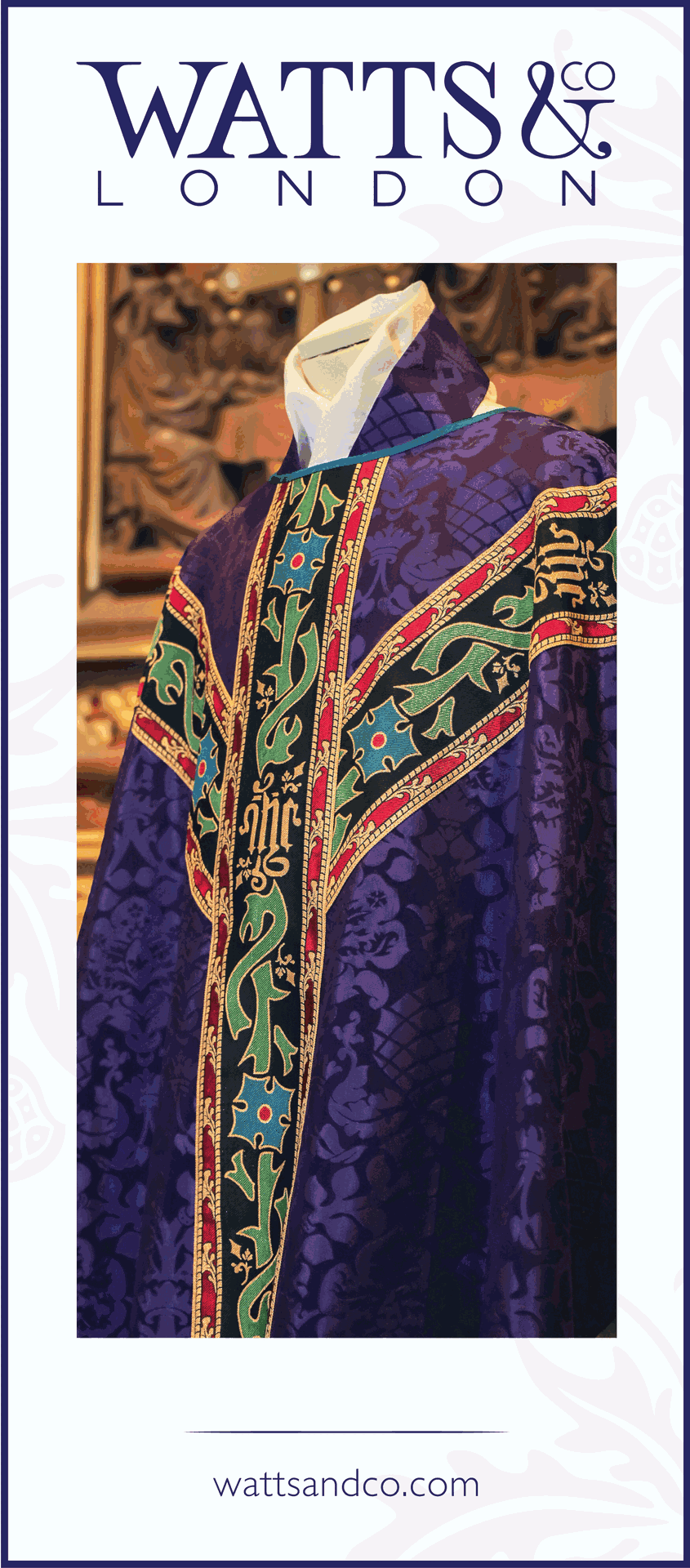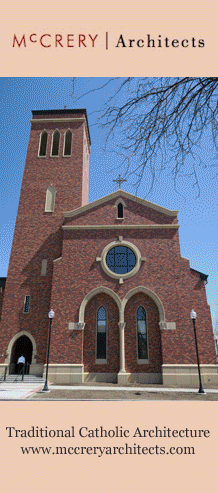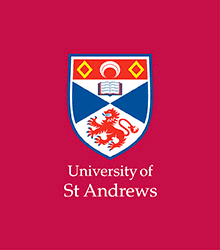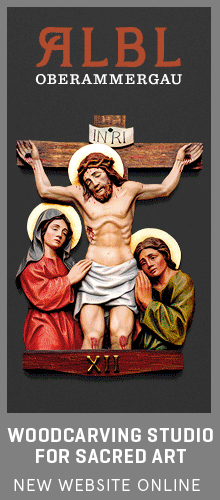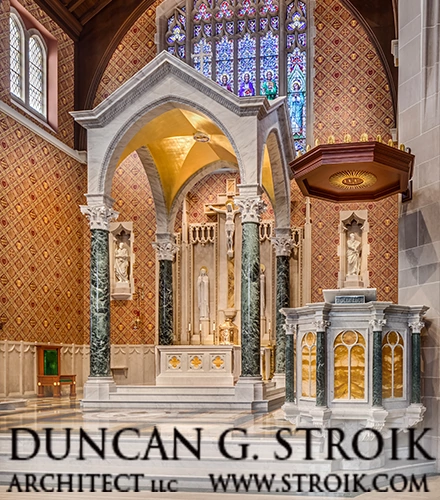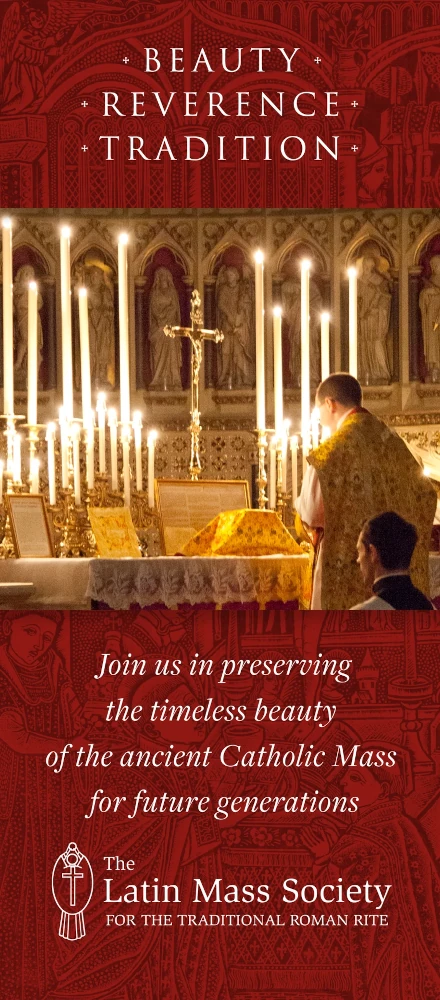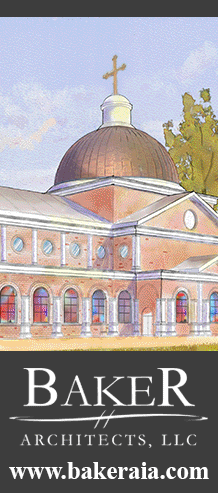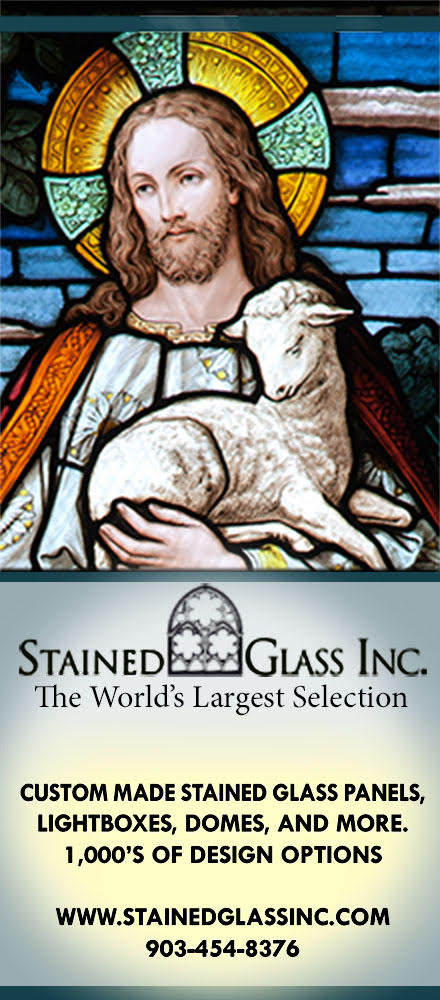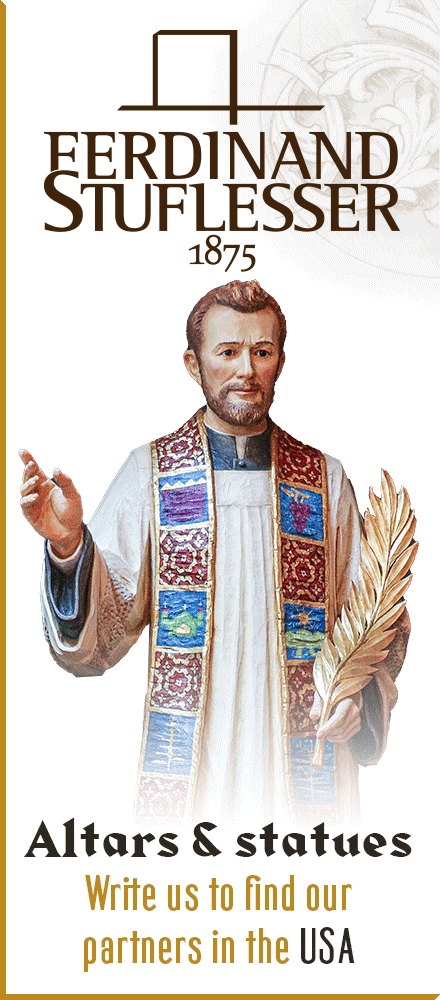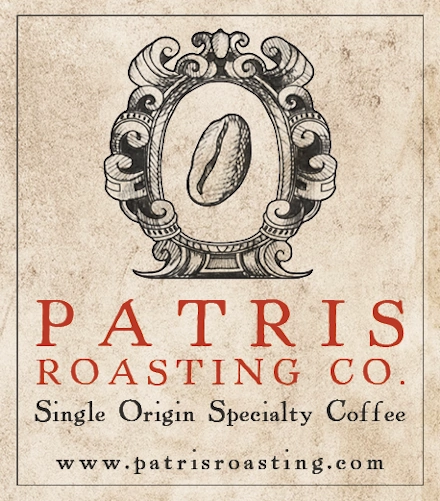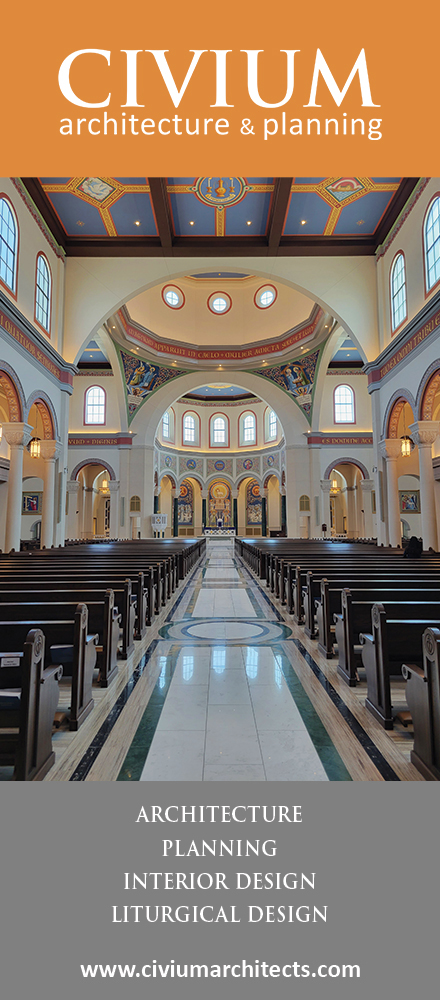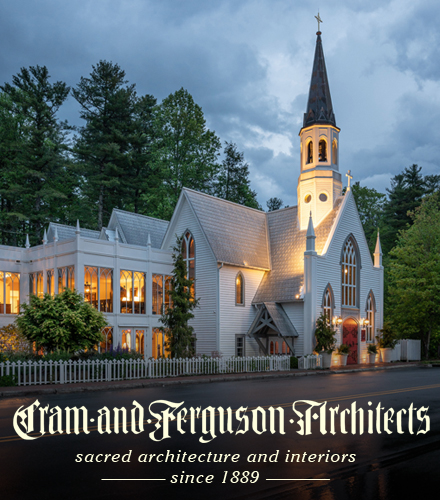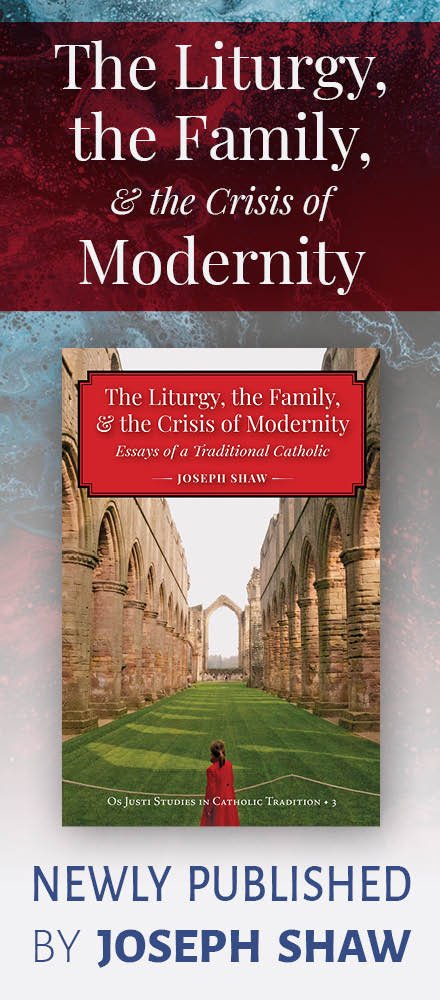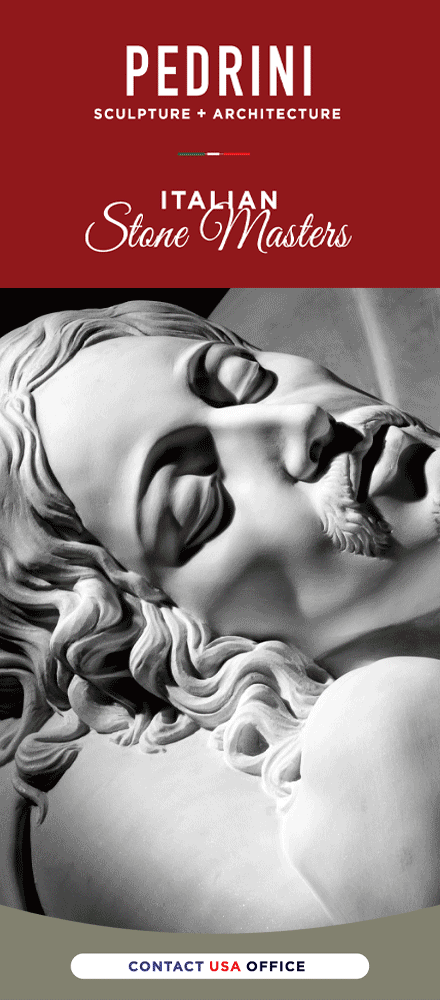After the incensation of the ministers, the deacon and subdeacon read the Sanctus with the priest as the acolytes go to light the "Sanctus Candles." Unfortunately, I don't have a picture of these, which are usually on branched candlesticks flanking the altar. These candles stay lighted till communion. There are six (three on each side of the altar) on first class feasts, four on second class, and two on ordinary days. Then, as the priest bows and begins the Te Igitur, the subdeacon puts on the humeral veil and receives the paten from the deacon. He will hold it covered until the Pater Noster. This, in our Rite and in the Roman, is a vestige of the ancient practice of receiving food offerings from the congregation at the Offertory. In order to get them off the altar they were covered and the subdeacon took then away and held them at the foot of the steps. One of the invariable rules of our Rite is that we do not follow the early modern practice of separating the Sanctus and Benedictus. The chant is always executed together. This means that there will be a silent period after the consecration. Taken with the silent period during the Offertory after the chant is over and the silent period after the Lord's Prayer, these are the "three silences" of the Mass. Medieval commentators considered them symbolic of Our Lord's three days in the tomb.
 During the Canon, up to the Quam oblationem, the deacon and subdeacon stand behind the priest, with the thurifer behind the subdeacon flanked by the acolytes. Thus they form a cross. At the Quam oblationem, the ministers again form the "flying wedge" and kneel, as you can see in this photograph of the Elevation of the Chalice. The triangle formed by the priest, the major ministers, and the three servers is clearly visible. The subdeacon holds the veiled paten, the thurifer has passed the censer to the deacon, who lifts the back of priest's chasuble and incenses continuously during the elevation. After the reposition of the chalice and genuflection, the priest will extend his hands moderately beyond his shoulders to form a cross, a position he will maintain until the words Hostiam puram. This is probably one of the best-known gestures in our Rite, one shared with the Norbertines and other northern liturgies. Otherwise, the priest does not extend his hands beyond the shoulders, and (unlike Roman priests) he holds them with palms facing forward not toward each other.
During the Canon, up to the Quam oblationem, the deacon and subdeacon stand behind the priest, with the thurifer behind the subdeacon flanked by the acolytes. Thus they form a cross. At the Quam oblationem, the ministers again form the "flying wedge" and kneel, as you can see in this photograph of the Elevation of the Chalice. The triangle formed by the priest, the major ministers, and the three servers is clearly visible. The subdeacon holds the veiled paten, the thurifer has passed the censer to the deacon, who lifts the back of priest's chasuble and incenses continuously during the elevation. After the reposition of the chalice and genuflection, the priest will extend his hands moderately beyond his shoulders to form a cross, a position he will maintain until the words Hostiam puram. This is probably one of the best-known gestures in our Rite, one shared with the Norbertines and other northern liturgies. Otherwise, the priest does not extend his hands beyond the shoulders, and (unlike Roman priests) he holds them with palms facing forward not toward each other.
 I have not had the opportunity to say much about choir rubrics, but this next photograph is so interesting that I need to. In it, you see a group of French friars performing "Prostration on the Forms" in the early 1950s. In the traditional Rite, the friars stood (with capuches up) from the Sanctus to the Quam oblationem, then, when the ministers knelt, they prostrated on the forms, as they are doing here, for the consecration. That they do not look up at the elevations is a sign of how ancient this act of reverence was. In fact, when the "Four Friars" did the first standardization of our liturgy in the 1230s, the elevation of the host was not practiced in most places. We first know it at Paris in 1205. It was probably added to our Rite by Humbert of Romans in the 1250s or some time before, but we didn't adopt the elevation of the chalice until the 1300s. Even then, we kept the ancient prostration as our sign of respect at the Consecration. That is, until 1963, when simple kneeling with head uncovered replaced it.
I have not had the opportunity to say much about choir rubrics, but this next photograph is so interesting that I need to. In it, you see a group of French friars performing "Prostration on the Forms" in the early 1950s. In the traditional Rite, the friars stood (with capuches up) from the Sanctus to the Quam oblationem, then, when the ministers knelt, they prostrated on the forms, as they are doing here, for the consecration. That they do not look up at the elevations is a sign of how ancient this act of reverence was. In fact, when the "Four Friars" did the first standardization of our liturgy in the 1230s, the elevation of the host was not practiced in most places. We first know it at Paris in 1205. It was probably added to our Rite by Humbert of Romans in the 1250s or some time before, but we didn't adopt the elevation of the chalice until the 1300s. Even then, we kept the ancient prostration as our sign of respect at the Consecration. That is, until 1963, when simple kneeling with head uncovered replaced it.
I might add that there are other archaic aspects in our Rite. For example, the only genuflections are on entering and leaving the church (when the Sacrament is reserved) and, by the priest, before and after each occasion when he touches the host or chalice after the Consecration. Ministers make a bow when they cross in front of the tabernacle during Mass, not a genuflection. So the priest only genuflects ten times in the entire Mass, other minsters only twice. Those who are used to the multiple genuflections in the traditional Roman Mass often comment on this. On the other hand, we never, never turn our backs on the tabernacle; something those in the Roman Rite do occasionally. This takes some intricate footwork, I assure you.
After the Pater Noster and the Pax Domini, comes the priest's communion. Our priest's communion rite is very simple. He has been holding the host in his left hand since the fraction during the doxology of the Libera nos. After dropping the particle into the chalice (with the commingling formula) and kissing its lip, he says the prayer Domine Iesu Christi (also in the Roman Rite) and the short formula Corpus et Sanguis Domini. He then immediatly receives communion. That is all: there is no Domine non sum dignus, no striking of the breast, and no other prayers. In fact, our priest's communion is simpler than that in the Ordinary Use of the Roman Rite. In the middle ages, when general communions in the monastery were only about ten times a year, the ceremony of the Pax was understood as a substitute for communion. We preserved this rite into the modern age, even after general communions become more common. When the priest kissed the chalice at the commingling, he turned his head to the deacon and said Pax tibi et sanctae Dei Ecclesiae. The deacon then took up the Pax Instrument (a small plaque with a holy image on the front and a handle on the back) from the altar and kissed it. He then presented it to the subdeacon to kiss with the same formula. The subdeacon then presented it to the minor ministers. Finally, the crucifer took it to the community, each of whom received it to kiss, again in order of religion, as at the incensing.
 During the Canon, up to the Quam oblationem, the deacon and subdeacon stand behind the priest, with the thurifer behind the subdeacon flanked by the acolytes. Thus they form a cross. At the Quam oblationem, the ministers again form the "flying wedge" and kneel, as you can see in this photograph of the Elevation of the Chalice. The triangle formed by the priest, the major ministers, and the three servers is clearly visible. The subdeacon holds the veiled paten, the thurifer has passed the censer to the deacon, who lifts the back of priest's chasuble and incenses continuously during the elevation. After the reposition of the chalice and genuflection, the priest will extend his hands moderately beyond his shoulders to form a cross, a position he will maintain until the words Hostiam puram. This is probably one of the best-known gestures in our Rite, one shared with the Norbertines and other northern liturgies. Otherwise, the priest does not extend his hands beyond the shoulders, and (unlike Roman priests) he holds them with palms facing forward not toward each other.
During the Canon, up to the Quam oblationem, the deacon and subdeacon stand behind the priest, with the thurifer behind the subdeacon flanked by the acolytes. Thus they form a cross. At the Quam oblationem, the ministers again form the "flying wedge" and kneel, as you can see in this photograph of the Elevation of the Chalice. The triangle formed by the priest, the major ministers, and the three servers is clearly visible. The subdeacon holds the veiled paten, the thurifer has passed the censer to the deacon, who lifts the back of priest's chasuble and incenses continuously during the elevation. After the reposition of the chalice and genuflection, the priest will extend his hands moderately beyond his shoulders to form a cross, a position he will maintain until the words Hostiam puram. This is probably one of the best-known gestures in our Rite, one shared with the Norbertines and other northern liturgies. Otherwise, the priest does not extend his hands beyond the shoulders, and (unlike Roman priests) he holds them with palms facing forward not toward each other. I have not had the opportunity to say much about choir rubrics, but this next photograph is so interesting that I need to. In it, you see a group of French friars performing "Prostration on the Forms" in the early 1950s. In the traditional Rite, the friars stood (with capuches up) from the Sanctus to the Quam oblationem, then, when the ministers knelt, they prostrated on the forms, as they are doing here, for the consecration. That they do not look up at the elevations is a sign of how ancient this act of reverence was. In fact, when the "Four Friars" did the first standardization of our liturgy in the 1230s, the elevation of the host was not practiced in most places. We first know it at Paris in 1205. It was probably added to our Rite by Humbert of Romans in the 1250s or some time before, but we didn't adopt the elevation of the chalice until the 1300s. Even then, we kept the ancient prostration as our sign of respect at the Consecration. That is, until 1963, when simple kneeling with head uncovered replaced it.
I have not had the opportunity to say much about choir rubrics, but this next photograph is so interesting that I need to. In it, you see a group of French friars performing "Prostration on the Forms" in the early 1950s. In the traditional Rite, the friars stood (with capuches up) from the Sanctus to the Quam oblationem, then, when the ministers knelt, they prostrated on the forms, as they are doing here, for the consecration. That they do not look up at the elevations is a sign of how ancient this act of reverence was. In fact, when the "Four Friars" did the first standardization of our liturgy in the 1230s, the elevation of the host was not practiced in most places. We first know it at Paris in 1205. It was probably added to our Rite by Humbert of Romans in the 1250s or some time before, but we didn't adopt the elevation of the chalice until the 1300s. Even then, we kept the ancient prostration as our sign of respect at the Consecration. That is, until 1963, when simple kneeling with head uncovered replaced it.I might add that there are other archaic aspects in our Rite. For example, the only genuflections are on entering and leaving the church (when the Sacrament is reserved) and, by the priest, before and after each occasion when he touches the host or chalice after the Consecration. Ministers make a bow when they cross in front of the tabernacle during Mass, not a genuflection. So the priest only genuflects ten times in the entire Mass, other minsters only twice. Those who are used to the multiple genuflections in the traditional Roman Mass often comment on this. On the other hand, we never, never turn our backs on the tabernacle; something those in the Roman Rite do occasionally. This takes some intricate footwork, I assure you.
After the Pater Noster and the Pax Domini, comes the priest's communion. Our priest's communion rite is very simple. He has been holding the host in his left hand since the fraction during the doxology of the Libera nos. After dropping the particle into the chalice (with the commingling formula) and kissing its lip, he says the prayer Domine Iesu Christi (also in the Roman Rite) and the short formula Corpus et Sanguis Domini. He then immediatly receives communion. That is all: there is no Domine non sum dignus, no striking of the breast, and no other prayers. In fact, our priest's communion is simpler than that in the Ordinary Use of the Roman Rite. In the middle ages, when general communions in the monastery were only about ten times a year, the ceremony of the Pax was understood as a substitute for communion. We preserved this rite into the modern age, even after general communions become more common. When the priest kissed the chalice at the commingling, he turned his head to the deacon and said Pax tibi et sanctae Dei Ecclesiae. The deacon then took up the Pax Instrument (a small plaque with a holy image on the front and a handle on the back) from the altar and kissed it. He then presented it to the subdeacon to kiss with the same formula. The subdeacon then presented it to the minor ministers. Finally, the crucifer took it to the community, each of whom received it to kiss, again in order of religion, as at the incensing.
 I like this picture of the friars' communion very much. It shows the prior, Fr. William Lewis, giving Easter Vigil communion to the St. Albert's community. On most days, the friars received communion at priests' daily private Masses, but on days of general communion they received it at the Sung Mass in a very impressive rite. After the singing the Agnus Dei and the Communion Verse that immediately followed it, the friars put on their cappas and filed out of the stalls. As the priest turned half way to expose the ciborium resting on the corporal, all did the "venia": a full prostration on the floor. They then, prostrate, recited together the Confiteor.
I like this picture of the friars' communion very much. It shows the prior, Fr. William Lewis, giving Easter Vigil communion to the St. Albert's community. On most days, the friars received communion at priests' daily private Masses, but on days of general communion they received it at the Sung Mass in a very impressive rite. After the singing the Agnus Dei and the Communion Verse that immediately followed it, the friars put on their cappas and filed out of the stalls. As the priest turned half way to expose the ciborium resting on the corporal, all did the "venia": a full prostration on the floor. They then, prostrate, recited together the Confiteor.The priest gave the absolution, and took up the ciborium. Then, in order of religion, the friars came forward to receive on the altar steps. Here the acolytes hold the "communion cloth" to catch the host should it drop. Notice that, in this photograph, since it is Eastertide, the friars are not wearing their black cappas, as they otherwise would. Those friars who are priests kneel and take the host with their own hand; the unordained receive, of course, on the tongue. I believe you can just make out in this picture a medieval practice that had died out in many parts of the Order. That friar standing in back is the deacon with a chalice of unconsecrated wine. After communion each friar communicant got a sip to cleanse his mouth of particles. I have actually only seen this elaborate communion ritual once. It was at a Missa Cantata that I sang at St. Dominic's Church in San Francisco for the feast of Our Lady of the Snow three years ago. The parish Schola Cantorum under Mr. Berry sang Palestrina and Biebl, and the Dominican community assisted in choro, following all the old choir rubrics.


